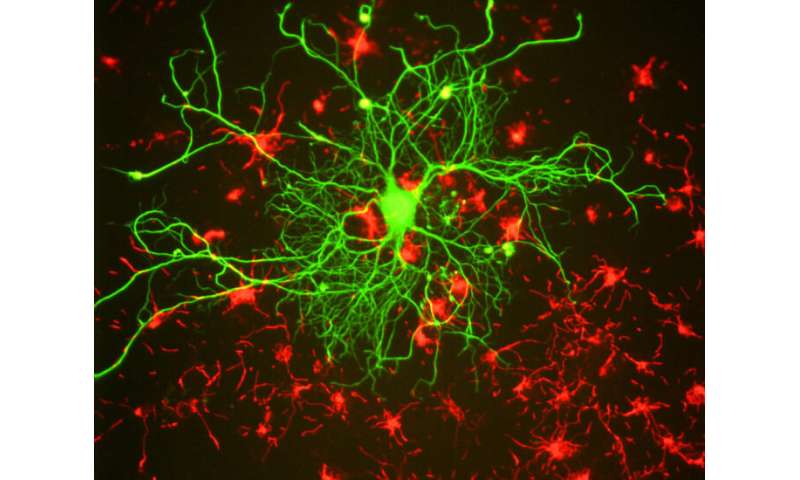
Researchers have moved one step closer to identifying targets for brain degeneration that occur decades before symptoms of Alzheimer’s disease appear—a much sought-after clue that might open the door to early treatment.
“Alzheimer’s is not a simple disease. Acting before the disease develops is the ultimate goal of treatment,” said Sara Fernández-Cabello, first author of the paper and postdoctoral research fellow at the Norwegian Centre for Mental Disorders Research.
Supported by Western’s BrainsCAN, the study, “Basal forebrain volume reliably predicts the cortical spread of Alzheimer’s degeneration,” was recently published in the journal Brain.
Alzheimer’s disease does not affect the brain uniformly, but rather progresses in stages with some areas of brain degeneration preceding degeneration in other areas. Underlying this neurodegenerative cascade presumably is the propagation of abnormal proteins in Alzheimer’s disease.
Researchers examined an area in the brain’s subcortical region called the basal forebrain that includes cholinergic neurons. These neurons are known to be severely damaged by Alzheimer’s disease.
The study confirmed that degeneration in the basal forebrain can predict damage to other areas of the brain, specifically the entorhinal cortex—an area in the medial temporal lobe responsible for memory, navigation and the perception of time.
“It’s been known for a long time that the cholinergic neurons are particularly devastated in Alzheimer’s disease,” said Schulich School of Medicine & Dentistry professor Taylor Schmitz, senior author. “This study confirmed that cholinergic denervation is an early stage of Alzheimer’s that precedes and predicts cortical degeneration.”
Fernández-Cabello added that the cholinergic system of the basal forebrain is highly susceptible to the accumulation of Alzheimer’s disease malformed proteins.
“The basal forebrain system is one of the earliest areas to accumulate these malformed proteins and this can, in principle, propagate throughout the brain, affecting other regions,” she said.
For the study, the authors used more than 835 samples from the Alzheimer’s Disease Neuroimaging Initiative (ADNI) database to obtain indices of grey matter in the basal forebrain and entorhinal cortex.
They then measured the change in the entorhinal cortex over a two-year period to determine if baseline volume in the basal forebrain predicted an entorhinal cortex change.
To determine if the change was connected to biological Alzheimer’s disease, the authors identified a group of individuals in the ADNI database with pTau and amyloid-β proteins—known as abnormal Alzheimer’s disease biomarkers. Using these biomarkers, they were able to verify that the degeneration pattern from the basal forebrain to the entorhinal cortex was only linked to individuals who had abnormal pTau and amyloid-β proteins.
“Traditionally, Alzheimer’s disease is looked at through the lens of either structural neurodegeneration or the accumulation of amyloid-β and pTau proteins, but rarely are these integrated systematically into single studies,” Schmitz said. “For this study, we put together these biomarkers of amyloid-β and pTau, integrated with longitudinal structural MRI [of the brain’s grey matter] and then tracked the evolution both in time and across clinical severity.”
These findings could offer possibilities for health-care providers and patients in the future.
Source: Read Full Article
